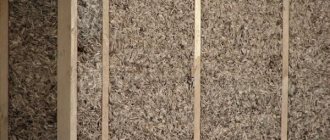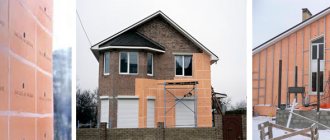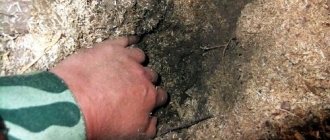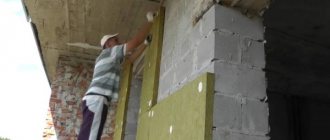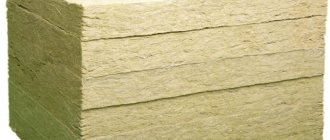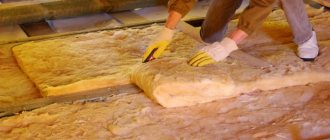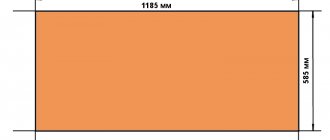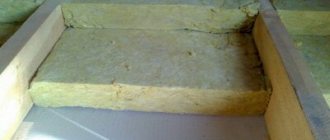Insulating a house with sawdust and lime will help significantly save on costs and increase thermal insulation properties.
Method No. 1
To carry out the work, it is necessary to prepare the following materials:
- sawdust, lime, cement, antiseptic for wood processing;
- container for mixing ingredients;
- shovel, stirrer, and watering can.
The thickness of the insulation layer will depend on the terrain, weather conditions, and operation of the building. If the building is used as a summer house, only in the summer, then the layer of insulation for the attic should be up to 25 centimeters, and for the walls - 15. But if you live permanently in the house, apply a layer of insulation up to 30 centimeters.
To ensure the safety of the house from fire, all wiring must be covered with metal sleeves.
After this, they begin to prepare the insulation mixture. To get the composition right, you need to take 10 parts of sawdust, one of lime, and one of cement or gypsum. All components are mixed and treated with boric acid or any wood antiseptic. Then add about 10 buckets of water (per 10 buckets of sawdust). After kneading, the mixture must be squeezed tightly in your hand, and then make sure that it does not crumble.
Then the composition is applied to areas that need insulation, compacted, and left for two weeks. After this time, check the voids; if there are any, they must be filled with sawdust. If there are no voids, you can proceed with further finishing.
Method number 2
In order to prepare the composition in the second way you will need:
- sawdust, clay, lime, water;
- mixing container;
- shovel, stirrer, and watering can.
To make an insulating mixture, you need to take 10 parts of sawdust, 5 parts of clay, 1 part lime, 7 parts water. The clay is poured with two parts water, it should be completely limp, the solution should resemble thick sour cream and not contain lumps. Then the sawdust is mixed with lime and added to the diluted clay. All components are mixed well, and the rest of the sawdust is gradually added. Then an ordinary stick is placed into the solution; if it remains standing and does not fall, then the mixture is ready for use. If the composition turns out to be liquid, then it must be left for 24 hours so that the moisture evaporates.
Features of using sawdust as insulation, its advantages and disadvantages
Sawdust is a waste product from the forestry industry, but it is an environmentally friendly material and does not emit caustic substances. Since ancient times, sawdust has been one of the oldest materials used as insulation.
Today, new types of insulation are replacing the material under study, but many continue to use it because they know its performance characteristics and its noticeable low cost.
Sawdust can be thrown in loose form into the wall frame
They are used to insulate the walls of small houses, bathhouses and gables in the attic. These waste products from the timber processing industry can be used at any stage of construction. It is not necessary to fill up the wooden dust or put it in bags on the frame; they can be thrown into the finished walls from above and compacted well. To increase the performance characteristics, sawdust is often impregnated with various antiseptic compounds, which prevents the appearance of insects in the insulation.
Sawdust is a flammable and easily ignitable material, so many construction experts recommend pouring this material into the wall using metal plates and partitions that will section the filling zones, thereby creating compartments. An electric cable mounted on walls insulated with sawdust must run in a special metal sleeve or corrugated pipe and have increased protection.
Advantages of sawdust
For many years, sawdust, as insulation, dominated among all types of thermal insulation.
They were used in different forms. Some people poured clean wood scraps, others mixed sawdust with glue or cement, thus creating blocks with which they later laid out the wall. Over the years, this material has been used in various forms to insulate rooms. Sawdust, like any other building material, has its advantages and disadvantages. The first group of characteristics includes:
- Environmental friendliness of the material. The composition does not contain harmful components that could have a negative effect on the human body. If you intend to create blocks from sawdust, then for these purposes you can use clay and lime as additional binding components.
For moisture resistance, silica gel is added to sawdust.
- Low cost. Sawdust is often obtained free of charge at various wood processing enterprises. Costs may only be due to shipping and handling costs.
- Long-term operation. Mankind, through long operational experience, has determined in what form it is best to use this material, therefore, before filling the walls, sawdust is specially moistened and dried several times. In recent years, antiseptics have begun to be added, thereby creating a barrier to the penetration of insects. Bags of silica gel are placed in the filled cells of the walls with sawdust to completely remove moisture from the heat insulator.
- No special preparation required. Wooden waste is filled manually without the use of special tools and equipment. The material is filled in freely, after which compaction is performed.
- Low thermal conductivity. Due to the fine fraction, this raw material has significantly lower thermal conductivity compared to boards or timber due to the absence of solid wood fibers.
Waste and shavings from wood-containing boards are not used as thermal insulation material, since the composition of such products already implies the presence of recycled wood and non-natural binding components.
Disadvantages of sawdust as insulation
Unfortunately, this insulating material has more disadvantages than its analogues, but over a long period of existence, measures have been invented that allow minimizing all negative factors.
The disadvantages of sawdust as insulation include:
- Increased fire hazard. Sawdust is a flammable material, but in order to partially avoid the problem and reduce the risk of fire, additional membranes made of tin or galvanized steel are created in the wall where the sawdust will be poured.
- Attracts living creatures and fungus. Since sawdust is a natural product, it can harbor small rodents, insects and mold. Today, this problem can be easily solved with the help of appropriate drugs that are harmless to the human body.
Soak the sawdust before installation
As you can see, all the main disadvantages of sawdust as an insulating material can be partially covered with the help of special preparations, materials and folk experience in using wood shavings.
How to insulate walls with sawdust
In order for sawdust to serve you as insulation for many years, when performing installation work you must follow a number of rules and operations that will help fix the material, select certain components for the composition and choose a specific fraction of sawdust.
Preparatory work
Before insulating a wall with sawdust, it is necessary to inspect the installation site and perform the following measures:
- clean the surface from dust and dirt, and also remove all sharp elements that could damage the waterproofing;
- all wooden structural elements should be impregnated with bioadditives that protect the surface from fungus, insects and easy ignition;
- all gaps should be sealed;
- install a waterproofing film.
Before using this type of insulation, it must be prepared and given additional performance characteristics. Before adding sawdust, you should do the following with the material:
- Sawdust processing. To protect against fungus and insects, the material is first poured onto film and processed with high quality. If sawdust is used to insulate a bath or sauna, then copper sulfate should not be added, as it releases harmful substances when heated.
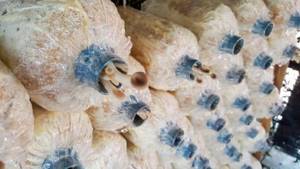
Treat sawdust with protective mixtures
Drying and reprocessing. After the initial treatment of sawdust with antiseptics, the material should be dried and re-treated.
- Sawdust processing. To protect against fungus and insects, the material is first poured onto film and processed with high quality. If sawdust is used to insulate a bath or sauna, then copper sulfate should not be added, as it releases harmful substances when heated.
- Rodent protection treatment. As protection against small rodents, slaked lime is most often used, which is added to the material in proportions of 1/5. For 5 parts sawdust, 1 part lime. The resulting substance must be well mixed.
- Drying the material. This process is best done outdoors, constantly stirring the resulting composition.
- Removing large fragments. To remove large fractions of sawdust, you should use a sieve; a spring net from an old bed can serve as such a device.
- If you create a wet solution for insulation, then the drying process with sawdust can be omitted. To learn how to properly insulate buildings with sawdust, watch this video:
When preparing material for use, it is very important to follow the order of work performed, otherwise the result may not meet the stated requirements.
Selection of sawdust for use
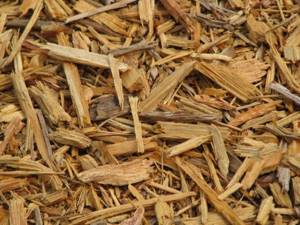
Insulating walls with sawdust is a simple process, but the material must be of high quality so that the insulation can last for many years.
Having learned the order of preparatory work and methods of processing the material, you should begin to select it. When choosing sawdust, consider the following factors:
- for dry filling of sawdust, waste from carpentry shops and workshops should be used, where only high-quality dried material is processed;
- to prepare a cement-containing mortar, you should use a fine fraction of sawdust that has lain for at least one year, since during this period all the resins that repel the cement bond will come out of the material;
- You should not use sawdust made from tree bark, as they contain many insects and parasites;
- for use as dry backfill, you should choose the middle fraction of sawdust;
- to insulate walls, it is better to use sawdust obtained from coniferous trees, since they contain resin that will prevent mold and mildew from growing in the material;
- To create a solution, you should choose fatty clay;
- Only waste from wood production is used, “furniture waste” cannot be used. For more information about the use of sawdust, watch this video:
The technology of using sawdust as insulation has been developed over the years, so for many years the walls of bathhouses were insulated with a mixture of larch and oak sawdust, adding 1/10 of ash to the composition. This composition perfectly resists moisture.
Filling the internal cavity of the frame
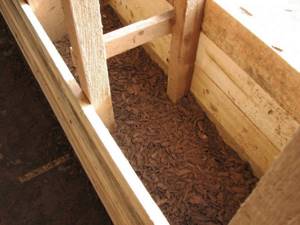
When building frame houses, walls and partitions are made of boards and beams, the space between which is sewn up with waterproofing on the outside and vapor barrier on the inside. Sawdust is poured into the gap between the 2 types of films.
To carry out the dry backfill method, mixing sawdust with lime (in the given proportions), the sawdust is installed 10-20 cm above the wall level (exposed with film). After some time, the material shrinks and you can safely install the ceiling. Some builders recommend organizing filling areas by creating retractable window sills so that sawdust can be added through them.
To ensure that sawdust shrinkage is not significant, in addition to lime, another 5-8% gypsum is added to the composition.
You can see the general “pie” of a frame house, including insulation, in the diagram below.
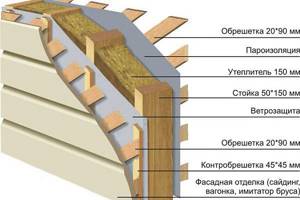
When creating a wet backfill, the same ingredients are used, but the addition to the composition is water. The procedure for preparing the wet mixture is the same as for any solution. Initially, sawdust is poured into a container, where lime and gypsum are gradually added (during the mixing process), and only after obtaining a homogeneous composition, water is added to it.
Preparation of a mixture of sawdust, lime, cement, etc.
It is not considered the best practice to insulate with sawdust alone; they are used as part of a special mixture. For the solution you need sawdust, water, a watering can, lime, a container where you can mix the mixture, boric acid, copper sulfate, a shovel for mixing, or a hand mixer.
You need to take ten times more sawdust than the other components of the mixture. Usually ten parts of sawdust, one part of lime, one part of cement are mixed with water, antiseptic and anti-flammable agents. The amount of water in the solution depends on the quality of the sawdust. If they are small, you will need a little more liquid. Conversely, for large and “fresh” wood shavings, less water is needed, but much more cement.
Note: by the way, you can make sawdust concrete from sawdust, and build walls from it that do not require additional insulation.
However, it is not recommended to use sawdust in its pure form, as it can easily ignite and become a breeding ground for rodents. Gas pipes, electrical wires, and materials that could block the escape of steam cannot be laid through a solution of sawdust and cement. Therefore, a mixture of sawdust and cement is excellent for sealing hard-to-reach places or for replacing other synthetic insulation materials, or, as already mentioned, for preparing sawdust concrete. The addition of cement is also necessary so that the sawdust absorbs excess moisture well.
The readiness of the solution is determined simply. To do this, you need to make a lump out of the mixture in your hands, and if it does not crumble, then you can begin the main work.
The readiness of the sawdust is checked by simply squeezing the lump with your hands.
The video below shows insulation with sawdust and lime, pouring them into the underground space (between the floor joists).
See also the mistakes made by the user mixing sawdust with lime in a concrete mixer:
How to choose the right sawdust?
When choosing a material, the quality of sawdust depends on its cost. That is, sawdust can be made from toxic trees, and their price is much lower. When purchasing sawdust, you must ask the company for documentation on the material, so you can be sure of its environmental friendliness.
To insulate a house, you need to choose sawdust of the average type. If the sawdust is large, then it loses some of its thermal insulation properties, and if the material is too small, it becomes inconvenient to work with, as it produces a lot of dust and can fly apart.
If materials with natural moisture are purchased, they must first be dried. To insulate a living space, it is better to use sawdust from coniferous wood; they contain resin and repel rodents and pests. In order to insulate a bathhouse, you can use sawdust from deciduous trees; they are mixed with ash or lime, otherwise they will rot.
Before use, the material is aged for six months to a year so that the substances in the sawdust that contribute to rotting are reduced. Sawdust should not contain debris or other inclusions, so they can be sifted through a construction sieve.
The use of sawdust and lime as insulation saves costs, since the cost of materials is not high. Sawdust has high heat-insulating and sound-proofing properties, but they cannot be used in its pure form, without impurities, as they are prone to rapid combustion. Thanks to the use of sawdust and lime in wet form, high-quality insulating blocks are obtained that are not subject to burning, rotting, and damage by rodents. Such materials can be used to insulate ceilings, walls, floors, roofs and attics.
Tips and tricks
Insulating a house with sawdust and lime is not particularly difficult. Even with minimal work experience, all repairs can be done independently, without turning to professionals. Here are some useful tips:
- To ensure maximum durability of the thermal insulation used, 10% dry lime should be added to the sawdust. This will prevent the development of bacteria and mold, and also protect the material from rodents.
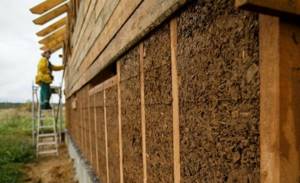
Dry lime will help protect your home from rodents
- When using sawdust with lime as insulation for wooden buildings, all fire safety requirements must be observed. Sawdust is treated with special fire retardants, and in the immediate vicinity of electrical wiring, stove pipes and chimneys, special frames are installed, which are insulated with asbestos and other fire-resistant materials.
- When insulating the ceiling, you should use high-quality cardboard, which will prevent small chips from falling off, allowing you to solve dust problems in the house.
- It is not recommended to use fresh sawdust for thermal insulation, since wood may contain various substances that prevent adhesion to concrete. The shavings should be kept indoors for several months, and only then should repair work begin.
Insulating walls with sawdust and cement will significantly reduce repair and construction costs. This type of work is not particularly difficult, so every homeowner can do it.
Installation of insulation
After all the preparatory work has been carried out, you can proceed to insulating the roof. The whole process is divided into several stages:
- Use the boards to make formwork on the attic floor. Substandard boards, even slabs, will be accepted.
- Prepare a solution of insulation from sawdust and the material of your choice. Pour it onto the prepared base. The thickness of the layer depends on the severity of frost in winter. If the temperature does not fall below -20 °C, then 12 cm is enough. But for climate zones with frosts below -40 °C, you will need an insulation thickness of 20 cm. When determining the size of the thermal insulation layer, do not forget about the load-bearing capacity of the floor.
- Using a long rule, level the poured layer and wait until it dries completely.
- After a few weeks, spread waterproofing on top of the hardened insulation. Secure the edges of the rolls to wooden floor joists.
- Finally, lay down sheets of plywood or chipboard and screw them to the joists with self-tapping screws. This layer will be the base for the final floor covering.
If you are insulating an attic roof, then prepare cavities in advance for laying insulation. Also lay the lining layer, then add a mixture of sawdust and lime. Nail the waterproofing film on top. The minimum thickness of insulation in a roofing pie is 20 cm.
As you have seen, the technology for insulating a house with sawdust is simple and accessible to anyone. There is no need for special electric tools, and the entire process, excluding hardening, takes place in 1-2 business days. Work carried out in accordance with the recommendations will protect your home from the cold for ten years.
Varieties of sawdust insulation compositions
The sawdust is first sifted through a sieve to remove debris, then treated with antiseptic and fire retardant agents.
- Mixtures with the following components: sawdust insulation with clay . The clay is placed in a large container, filled with water and swells for a day or longer until a thick consistency is obtained. To obtain a plastic mixture, the proportion of insulation clay with sawdust is 1 to 0.75. Mixing can be done in a mortar mixer or manually with a shovel. The mixture can be prepared immediately for the entire scope of work, it will not spoil. Before each use, stir it and add water if necessary. Most often, clay with sawdust is used as insulation on the ceiling, less often on the walls.
- insulation sawdust with lime . One part of fluff lime is added to ten parts of sawdust and mixed thoroughly until homogeneous. To eliminate settling of the insulating mixture, gypsum is added, the final proportions in%: sawdust 85, lime 10 and gypsum 5. The mixture is soaked and immediately applied. The composition sets quickly, so it is prepared in small portions or the gypsum is replaced with a cement solution. Sawdust and lime as insulation are an excellent solution for thermal insulation of floors.
- Sawdust-cement-lime mixture in proportions 1:10:1. The amount of water depends on the insulation method.
- Sawdust granules are prepared from fine sawdust with the addition of antiseptics, fire retardants and carboxymethylcellulose glue. Ready-made sawdust granules as ceiling insulation retain heat well, do not shrink, and do not attract rodents for making burrows.
- Clean dry sawdust after bacteriological and fire retardant treatment. They are rarely used, mainly for thermal insulation of floors. The main disadvantage is the need to periodically top up the layers during operation due to their compaction.
Sawdust as insulation for walls and ceilings is often used in the form of ready-made mats made from clay-sawdust mixtures.
Insulation of ceilings
Almost twenty percent of the heat leaves the room through the ceilings and the surface itself. Therefore, creating an additional layer will make heating more economical and maintain the desired temperature in the room. Ceiling insulation requires special attention. First, all beams supporting the ceiling and interfloor and interior floors are covered with glassine for waterproofing. Then the entire ceiling must be covered with the same material. And only then should the mixture be poured onto the roof from the outside and compacted well.
Detailed installation diagram of sawdust with clay
If you make a mixture consisting of clay and sawdust , you will get an excellent material with waterproofing and thermal insulation properties.
It is well suited for insulating the walls of a house built in any region.
This mixture will keep the house warm in severe frost and will not allow the room to warm up during the summer heat.
Insulating walls using sawdust-clay material is not as simple as it might seem at first glance.
Therefore, during the work process, you must strictly adhere to the following recommendations:
- When preparing the mixture, you must adhere to the exact quantitative ratios of the ingredients.
- The finished mixture must be applied to the walls at a certain thickness. This is the only way you can achieve maximum effect.
- For thermal insulation of walls, you need to make slabs from clay and small sawdust.
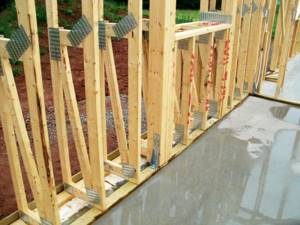
Lathing for insulation
A mixture of clay and sawdust can be made and laid in several ways; we will consider one option, that is, laying the wet substance on a sheathing pre-fixed to the wall.
What proportions must be maintained to make the mixture plastic?
Clay diluted with water should be mixed with sawdust in a shallow metal container. You can use a concrete mixer to mix the composition . The finished composition must be applied to the walls.
You can also insulate the walls with such a mixture by pouring it into the formwork attached to the frame wall . If you fix shingles on the wall, then you can spread the clay in a layer of no more than 30mm.
After the sawdust-clay layer has dried, it needs to be leveled with cement-sand mortar and only then plastered.
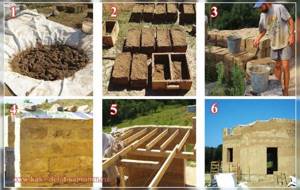
Manufacturing and laying of slabs
Properties of wood and sawdust
Wood shavings and sawdust are most often used for insulation, as they have a number of advantages that distinguish them from artificial materials.
- Firstly, they have fairly high heat retention rates (the thermal conductivity coefficient of sawdust is 0.06 - 0.07 W/(m2•°C), i.e. almost like polystyrene foam).
- Secondly, wood is great for creating an additional layer of sound insulation .
- Thirdly, sawdust is an environmentally friendly material .
- Fourthly, of all materials, wood is the cheapest (at least in regions rich in forests). And because Sawdust is generally a production waste, so often some workshops are ready to give it away almost for free, so as not to spend money on its removal.
Therefore, sawdust is quite suitable for creating warm walls, floors, ceilings, and roofs in a wooden, frame, or stone house.
Insulation with sawdust and wood shavings
Sawdust insulation was widely used in the 60s and 70s in Western countries. But later sawdust was replaced with modern, highly effective insulation, more durable and reliable, which is easier to install.
However, it may be advisable to insulate with sawdust even now, if it is possible to “get” them for free. Until now, many organizations that process wood are ready to give sawdust and shavings for free or at no cost; there are still costs for their transportation, for additional materials that are mixed with sawdust, as well as for the increased labor intensity of using this insulation.
But before we consider how to insulate using sawdust and shavings, let’s decide how much and what kind of sawdust will be needed for insulation, what layer needs to be created...
What sawdust and wood shavings should be used for insulation?
It should be taken into account that the larger the sawdust, the more advisable it is to insulate with it - the specific gravity and thermal conductivity coefficient are slightly lower. Also, as the size of sawdust increases, the dependence on its moisture content sharply decreases.
In fact, it is recommended to use small wood shavings, twisted into rings. It can form an elastic thick carpet filled with air with a volumetric weight of less than 200 kg/m3. It is better to leave small sawdust from sawing aside.
It is unacceptable to use small sawdust and shavings from sawing plywood, which are abundant in furniture factories and which no one needs. This plywood waste is oversaturated with formaldehyde and is not safe. Their thermal conductivity coefficient is high.

Sawdust layer thickness
The thermal conductivity coefficient of the sawdust layer is approximately 0.07 - 0.095 W/m?C, depending on the moisture content of the material, its size and packing density. For design and calculations, you can take the average value of 0.08 W/m?S.
Those. Compared to modern insulation materials (0.03 - 0.045 W/m?C), sawdust has approximately twice the body conductivity, and the thickness of their layer will be required twice as much.
For regions with the Moscow climate, when insulating the attic of a house, you will need a sawdust layer thickness of at least 32 cm to achieve optimal insulation according to the standard, and better - 35 cm. For a house of 100 sq. m. in the attic you will need a 30 m cube of sawdust, about 7 tons.
On the wall, for its insulation, there must be a layer of sawdust of at least 20 cm. Under the floor with a positive temperature - at least 26 cm, which no longer fits between the joists.
It is because of these figures that the question arises: “Is it advisable to use sawdust as insulation?” But still, the monetary savings compared to mineral wool insulation can be impressive with free material, especially if you do it yourself.
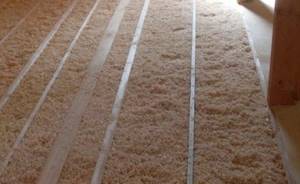
How to protect against rodents and decay
It’s probably hard to think of a better home for a rodent than sawdust. And all possible insects and microorganisms will eat sawdust very quickly. Therefore, there is no particular point in filling them in in their pure form; the material must be treated with antiseptics. The most common and accessible is fluff lime. But it's not cheap.
Recipe for use: 20 volumes of sawdust per volume of lime. Water is added to this mixture to create a suspension and all the sawdust is saturated with antiseptics. But soap, boric acid, and copper sulfate are additionally dissolved in water (you can do a little of everything together for a comprehensive solution, so to speak...). The material is laid wet, then within a week or two the water evaporates, and the dry, treated insulation remains in place.
Bonding the composition
Additionally, it is recommended to add two volumes of cement to this solution. As a result, after laying, the sawdust will bind together and become stronger, which will prevent their further shrinkage. When laying in vertical panels, binding sawdust with cement or gypsum is mandatory.
It is not permissible to place sawdust or wood shavings in direct contact with chimneys or similar heating structures. A fire barrier made of mineral wool of at least 30 cm is required. Electrical wiring is laid through sawdust only in a fireproof shell (in metal pipes).
How to use on floors
Sawdust and wood shavings are vapor-transparent materials, so you need to use the usual recommendations for the use of such insulation. A vapor barrier must be installed on the attic floor on the side of the house; it will reduce the humidity inside the thermal insulation layer and prevent it from getting wet in cold weather.
A ventilation gap with a thickness of 3 cm to the flooring or fence must be left on top of the layer. Typically, shavings are poured onto a vapor barrier film between the joists, then a counter-lattice with a height of 15 cm is made and the mixture is topped up, leaving the vent. gap under the top deck.

How to use wood chips to insulate walls
When insulating walls, wood shavings can be placed between the wall and the mesh fencing. If the wall is thick and made of dense materials (not a thin shield), then a vapor barrier is not needed.
A vertical sheathing is installed on hangers with a pitch of 600 mm along the thickness of the insulation - 20 cm from the wall, on which a fine fiberglass mesh is fixed.
Moistened wood shavings impregnated with cement or gypsum are gradually poured between the mesh and the wall from bottom to top in layers of 20 cm. To prevent the mesh from blowing out too much, plywood panels are used, temporarily installed on the sheathing until the insulation dries.
30 mm thick beams are placed on top of the sheathing to form a ventilation gap, after which siding or other cladding is installed.
Typical mistakes when insulating with sawdust
In this video about insulating an attic using sawdust, you can see some actions that can negatively affect the quality of insulation.
- There are gaps allowed during construction, which are sealed with polyurethane foam. But it is better not to use this foam in layers of insulation, where water vapor condenses due to temperature differences, since it is easily saturated with water and therefore collapses, leaving cracks open. Replaced with polyurethane foam glue.
- There is no vapor barrier on the room side. As a result, the insulation will become moisturized during the cold season, losing its heat-saving properties, with accelerated decomposition.
- Clean sawdust is used without treatment with antiseptics, as a result of which soon they may become putrefactive and become waterlogged.
- A layer thickness that is not optimal for economic feasibility is used - by eye, according to speculation and recommendations... - as a result, money is lost due to insufficient energy savings.
Material selection and backfill options
- The sawdust material must be selected slightly damp or completely dry. The smell should be clean, without any admixture of aromas unusual for wood. Before use, the mixture must be treated with antiperones and antiseptics and dry again. When the mass dries, you can add 10% lime (fluff) and very little copper sulfate (borax), after which the composition is mixed as thoroughly as possible.
- There are several installation options:
- backfill in clean dry form;
- backfilling with sawdust mixed with cement (diluted with water);
- backfilling with sawdust mixed with clay or sand-clay mixture.
Advice! The last two options require prompt installation, since the masses have an increased ability to dry out and subsequent compaction/compaction will become impossible.
Dry backfill option

For this method, it is necessary to make two layers of filling. The first is coarse sawdust or shavings, the second is fine dust. The measure is indicated to get rid of dust in the house, which inevitably appears if only fine-chip waste is used.
Insulation of a concrete floor in a private house
When filling only large sawdust, the problem arises of the impossibility of thorough compaction, which is necessary to preserve heat in the house. Thus, large waste wood is poured into a layer of at least 10-15 cm, compacted and a layer of small sawdust of the same thickness is placed on top. The layers must be pressed and trampled.
Advice! It is permissible to slightly wet the layers for better shrinkage. The layer sufficient for insulation is (compacted) 25-30 cm. In addition to sawdust, it is recommended to use ash, slag (completely burnt and cooled), clay, and sand. This method will significantly improve the thermal insulation qualities of the backfill and prevent rodents from settling in the sawdust layer, and also protect the “cushion” from rotting.
Sawdust and cement
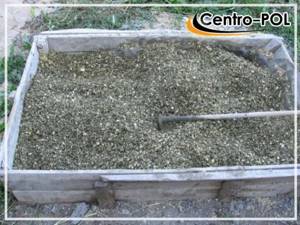
When implementing a thermal insulation layer from sawdust with cement, it is necessary to choose slightly damp shavings, the shelf life of which is at least 1 year. Make sure there are no pockets of mold, mildew or other bacteria. The mixture has a ratio: 20:3:2. In this case, the solution is added only in small portions to prevent drying. When mixing the dry ingredients, add water very carefully so that lumps of unmixed material do not appear.
Advice! Processing sawdust before work is a mandatory procedure. Mixing with lime, vitriol, and antiseptics will help extend the life of the layer. If it was not possible to carry out all the processes in advance, add the compounds to the prepared solution.
When using sawdust with cement, sometimes it is necessary to prepare a sand substrate where backfilling/filling will be done. Otherwise, the insulation is filled in and compacted to a thickness of 5-10 cm. The main indicator of maturation is the elasticity of the base. The layer may crunch a little, but should not fall through.
Final processing plays an important role. For fearless operation, a structure made of boards is laid on the base; if the floor is not used (on the roof, attic), the insulation is not covered.
Solutions for various brands
Depending on the concentration of ingredients, sawdust concrete blocks are divided into the following grades:
- M5.
It is characterized by a density reduced to 0.6 t/m3 and a reduced thermal conductivity coefficient of 0.18. For one 50-kilogram bag of cement, you need to take 0.2 tons of sawdust and lime, as well as 20 kg of sown sand;
M10.
The thermal conductivity coefficient is 0.21, and the specific gravity increases to 0.8 t/m3. To prepare a bag of Portland cement, you need to mix it with 100 kg of shavings and 100 kg of sand, and also add 80 kg of lime;
- M15.
Density and thermal conductivity increase and amount to 0.8 t/m3 and 0.24, respectively. To prepare 50 kg of cement, 70 kg of tyrsa, 30 kg of lime and 115 kg of sand are added; - M20.
The specific density reaches 0.95 t/m3, and the thermal conductivity coefficient increases to 0.3. Sawdust concrete is prepared by mixing 50 kg of cement and sawdust with the addition of 130 kg of sand and 15 kg of lime.
As the grade of sawdust concrete increases, the coefficient of thermal conductivity increases and the density increases. High grade blocks allow the construction of enlarged rooms in which, due to the high thermal conductivity coefficient, it is difficult to maintain a comfortable temperature regime. The introduction of special additives, soaking wood raw materials in liquid glass and lime milk allows the use of raw materials with increased humidity and increases the fire resistance of the blocks.
Brand M10 requires the following quantities: half a bucket of binding material, a bucket with a heap of purified sand and a little more than three buckets of shavings
The readiness of the mixed components is determined by squeezing the prepared mixture with the palm of your hand. Plastic and ready for molding, the material retains fingerprints, which indicates that the solution is ready for pouring.
